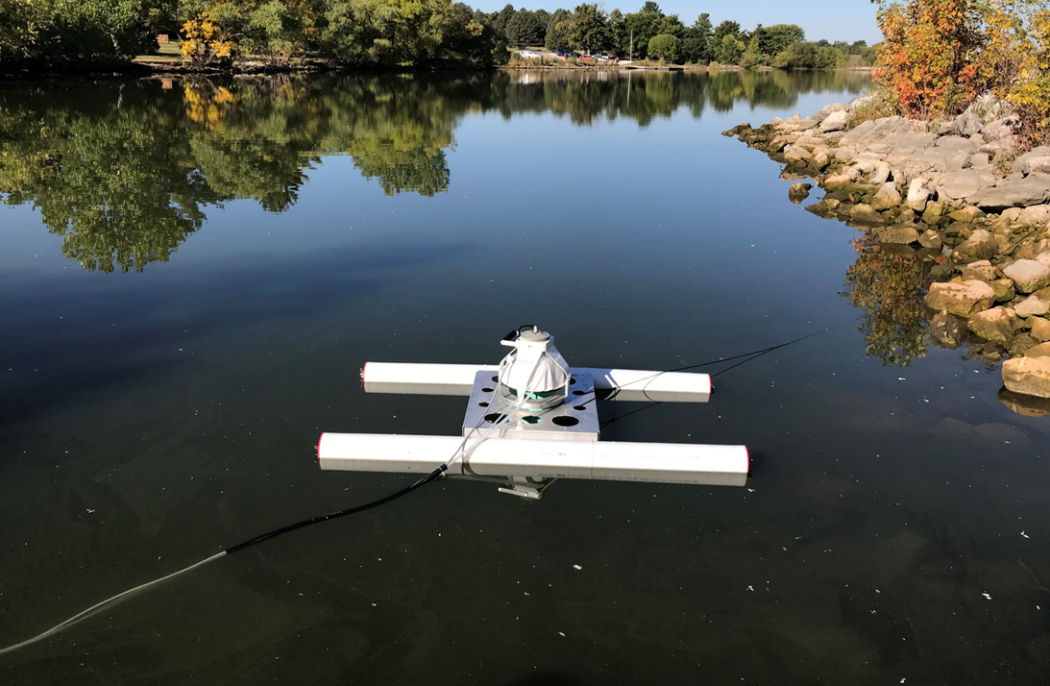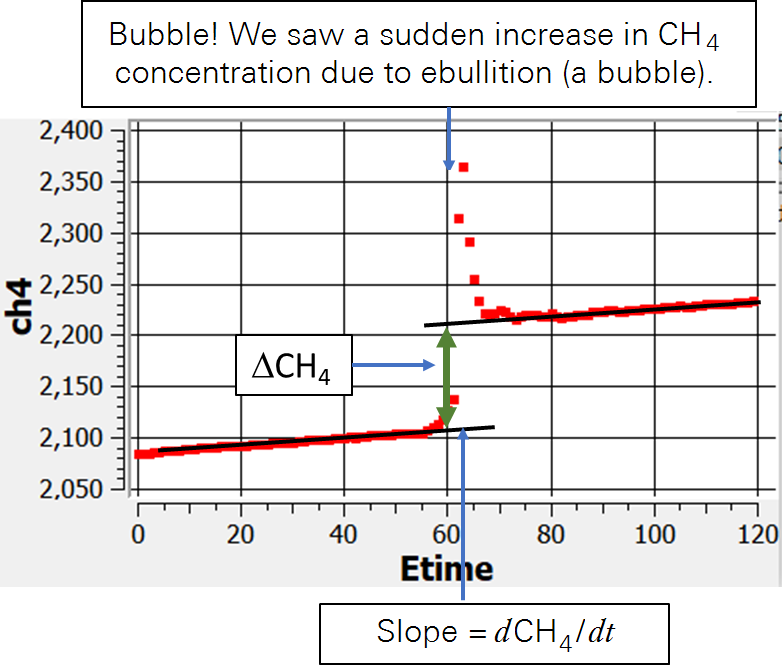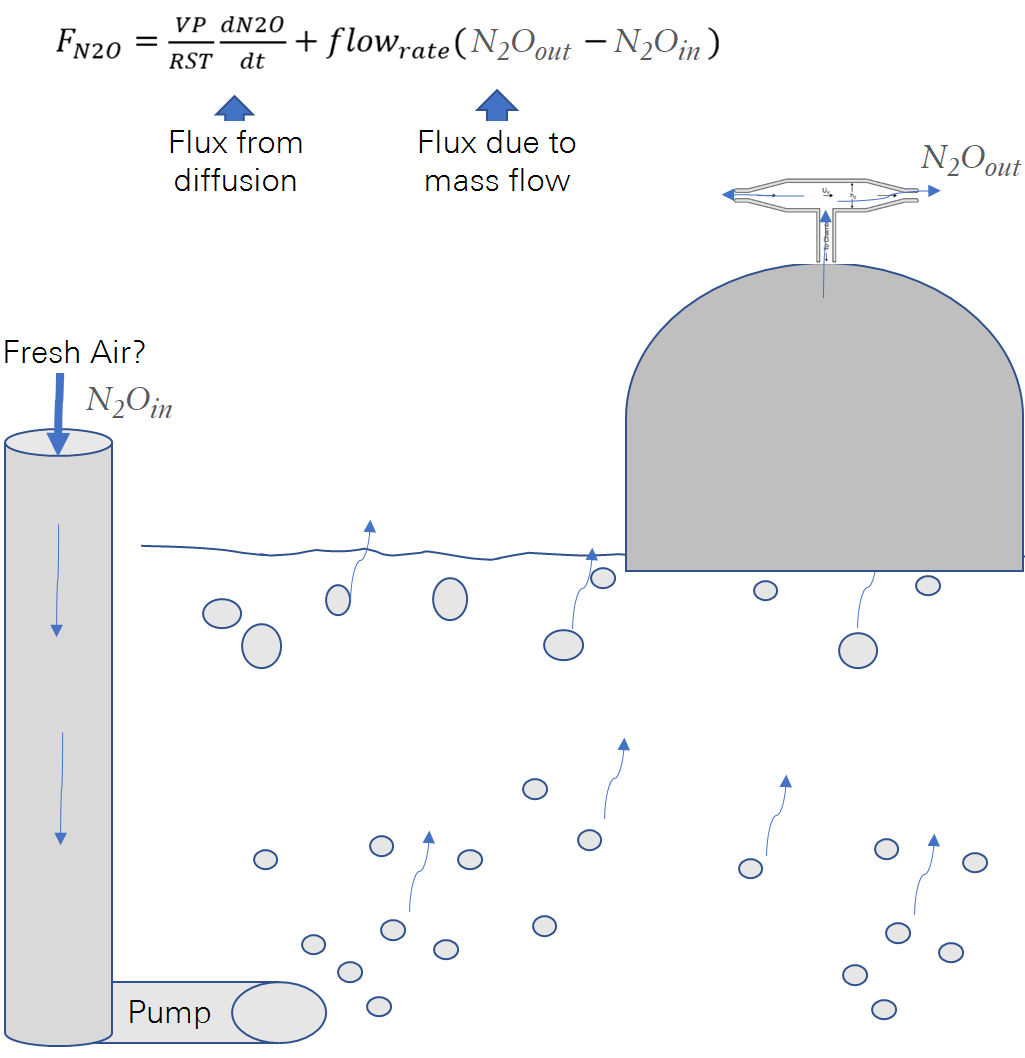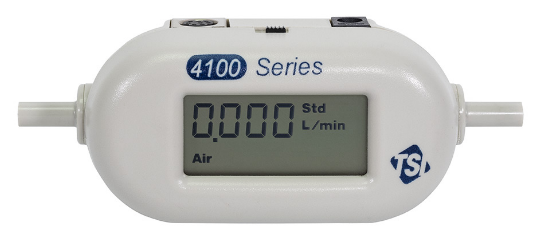Measuring Gas Flux from a Water Surface with Floating Chambers
Authors: LI-COR, Inc.
Correspondence: envsupport@licor.com
Published: 2024
Instruments: Smart Chamber, LI-870, LI-7810, LI-7820
Keywords: gas flux over water, floating chamber, water surface
Abstract
It is possible to make gas flux measurements from the water surface by placing a LI-COR soil flux chamber onto a floating platform. While this is possible with both the Smart Chamber for survey measurements and long-term chambers, we will here focus on the more practical survey approach using the Smart Chamber.
The Smart Chamber is more practical than long-term chambers on account of the symmetrical shape, which has a stable center of mass. Figure 1 shows a floating chamber platform featuring several recommended features.

These features, designed to stabilize the chamber and ensure reliable flux measurements, include:
-
Suitable flotation materials - closed cell polyethylene is a great option that is low density, water resistant, durable, and UV-stable.
-
Width sufficient to provide a stable platform on water. Pontoons are essential to provide stability.
-
Holes added to the platform area surrounding the chamber aperture, preventing build up and ingress of large gas bubbles.
-
A collar set at a height at which the lower aperture is submerged at all times.
-
A means, in addition to gravity, to secure the chamber to the collar, such as cable ties or wire.
1 | Gas Analyzers
It is important to ensure that the analyzer does not suck water into the tubing. If that happens, it will be a very expensive repair. LI-78xx Trace Gas Analyzers have a feature whereby the internal pump is disengaged if the intake filter is obstructed by liquid water or another blockage. The instrument detects the pressure drop and shuts off the pump. This application note provides suggestions to further mitigate the possibility of water ingress into your analyzer: licor.com/env/support/Trace-Gas-Analyzers/topics/avoiding-water-ingress.html. A service agreement can further mitigate the financial risk of repairs, if damage occurs.
You can also use a longer cable connection so that the analyzer stays on land. For the plumbing you can use any tubing with a ¼ inch OD and ⅛ inch ID. You can buy it from LI-COR as part number 8150-250 Bev-A-Line tubing (a single 15 m length). The internal pump of the LI‑78xx Trace Gas Analyzer can comfortably sample with that tubing length. We recommend the weatherized Ethernet cable for longer lengths. Cables are available from LI-COR or Samtec (www.samtec.com/products/rce). Samtec can supply cables at custom lengths to order. The cable bundle – Ethernet cable and gas inlet/outlet tubing - can be wrapped in split loom conduit. 15 meter tubing/ethernet cable sets have been tested successfully with LI-78xx instruments and Smart Chamber.
2 | Measurements
Measurements on water are made in the same way as those made on soil. The chamber thermocouple can be used to measure water temperature for Smart Chamber systems, while an SDI-12 sensor can be used for long term chamber setups.
3 | Data Analysis
The setup shown in Figure 1 was used to collect CH4 data with a LI-7810 Trace Gas Analyzer. Figure 2 shows typical collected data, absent from gas bubbles formed at the bed of the water body and released to the surface (ebullition).

From the time series shown in Figure 3, you can clearly see that a bubble has entered the chamber (ebullition). CH4 concentration shows a sudden increase at ~62 seconds of the observation. For this simple case, it is possible to estimate the portion of the flux coming from diffusion and from ebullition.
The flux from diffusion can be estimated with SoilFluxPro with a short time window, for this example from 20 to 55 seconds using the slope of dCH4/dt.
The amount of flux from ebullition can be estimated with ∆CH4 as shown in Figure 3, with the information of system total volume, pressure, chamber temp, water vapor humidity.

This is a simple case with a single ebullition event. With multiple such events over a short time period, fluxes resulting from diffusion and ebullition become more difficult to resolve accurately.
It is also possible to determine gas fluxes from aerated water bodies. One such example where a floating chamber approach has been successful is for the determination of N2O fluxes over nitrification/denitrification channels at waste water facilities. Here, the standard flux equation is modified to provide a total flux based on flux from diffusion and flux from mass flow transport, as shown in Figure 4.

In such a setup, it is necessary to measure N2Oout by detaching the pressure vent on top of the chamber and replacing it with a mass flow meter. For example, in the waste water application, a TSI Mass Flow Meter, Model 41401 was applied (Figure 5).

4 | References and examples
Several researchers have used different methods and materials to build floating collars and chambers. Here are a few examples. We have not tested any of these approaches and the researchers do this at their own risk.
| 1 | Beaulieu, J.J., McManus, M.G. and Nietch, C.T. (2016). Estimates of reservoir methane emissions based on a spatially balanced probabilistic-survey. Limnology and Oceanography, 61(S1), pp.S27–S40. https://doi.org/10.1002/lno.10284. |
| 2 | Goeckner, A.H., Lusk, M.G., Reisinger, A.J. et al. (2022) Florida’s urban stormwater ponds are net sources of carbon to the atmosphere despite increased carbon burial over time. Communications Earth and Environment 3, 53 (2022). https://doi.org/10.1038/s43247-022-00384-y |
| 3 | Mazot, A., and Taran, Y. (2009). CO2 flux from the volcanic lake of El Chichón (Mexico). Geofísica Internacional, 48(1), 73–83. https://doi.org/10.22201/igeof.00167169p.2009.48.1.100. |
| 4 | Natchimuthu, S., Sundgren, I., Gålfalk, M., Klemedtsson, L., Crill, P., Danielsson, Å. and Bastviken, D. (2015). Spatio-temporal variability of lake CH4 fluxes and its influence on annual whole lake emission estimates. Limnology and Oceanography, 61(S1), pp.S13–S26. https://doi.org/10.1002/lno.10222. |
| 5 | Singh, A., Deventer, M., Yu, Z., Erickson, M., Baker, J., Griffis, T, and Millet, D. (2019). Importance of CH4 and CO2 fluxes from stream and river networks: Constraints from agricultural watersheds in Southern Minnesota. https://www.researchgate.net/publication/337928374 |
| 6 | Wik, M., Thornton, B.F., Varner, R.K., McCalley, C. and Crill, P.M. (2020). Stable Methane Isotopologues From Northern Lakes Suggest That Ebullition Is Dominated by Sub‐Lake Scale Processes. Journal of Geophysical Research: Biogeosciences, 125(10). https://doi.org/10.1029/2019jg005601. |